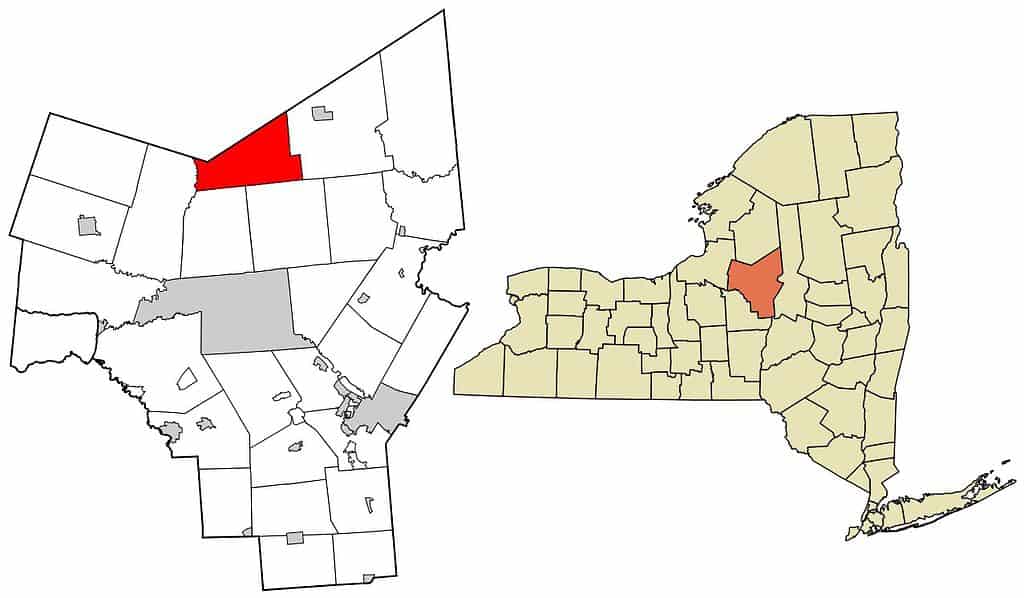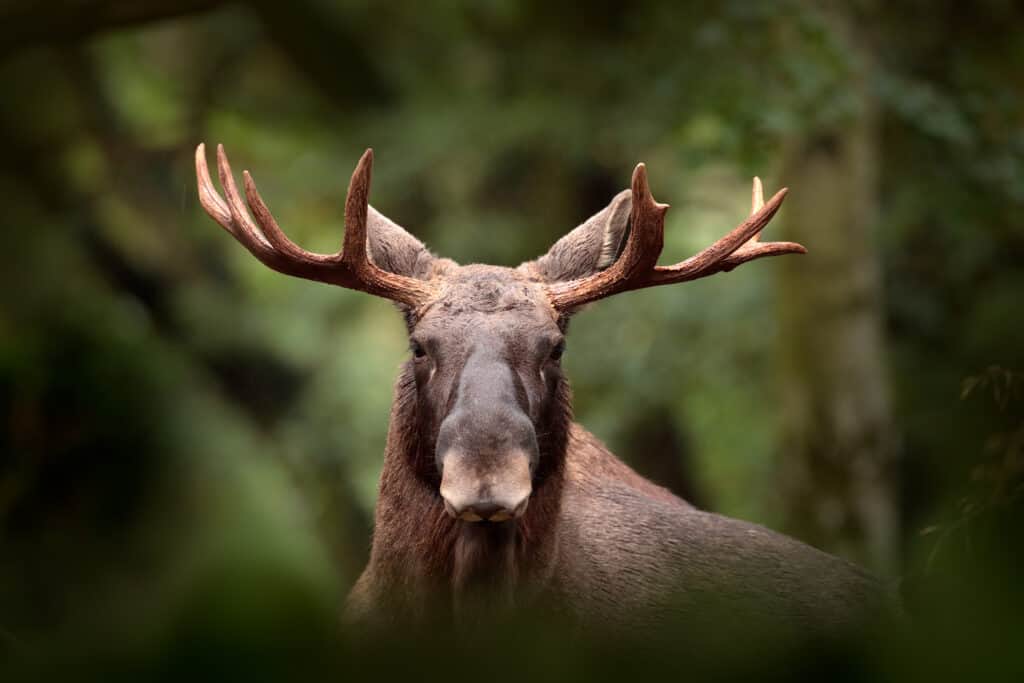Winter is here with us, a season synonymous with snowfall. Many states experience extremely snowy months, with massive snow covering the surface. Unfortunately, New York is among the states where snowing can get overboard due to low temperatures.
So, which is the snowiest place in New York, otherwise known as the Empire State?
Many places come to mind when considering the highest average snow cover, with Ava taking the top spot.
Ava is a small town in Oneida County, with an annual average snowfall of 153 inches. To get a picture of how snowy it can get, the average yearly snowfall in the US is 28 inches. Stick on to learn more about Ava and its significance.
This piece takes an in-depth look at Ava town and how severe the snow can get.
History of Ava

The main economic activity of Ava is agriculture.
©Doug Kerr from Albany, NY, United States / CC BY-SA 2.0 – License
Ava has a rich history, dating back to the mid-18th century when it was part of the Town of Boonville. It became an independent town in 1846, becoming the second last town to be formed in Oneida County, with Forestport succeeding it in 1869.
Ebenezer Harger was among the first people to settle in Ava in 1798, after moving from Connecticut to Whitestown in 1796. Other settlers migrated to Ava as the century folded, coming from Rhode Island, Massachusetts, and other states.
By the turn of the 19th century, the growing settlement had only nine people, with Chauncey Harger being the first child born in Ava. By the time it became a fully-fledged town, Ava was home to roughly 1000 people.
The town borrows its name from the Burmese Kingdom of Ava. The main economic activity of Ava is agriculture.
Population of Ava

In Ava, the median age is 43 for males and 39.2 for females.
©Buffaboy / CC BY-SA 4.0 – License
Ava has a small population of around 788 people, according to a 2022 estimate. The city’s highest population was around the mid-1800s when it reached 1400. After that, it fluctuated, reaching lows of up to 600 in the 2010 census.
The 2020 census found 725 people, 193 families, and 257 households inhabiting the town. At the time, the town’s population density stood at 19.2 people per square mile. Similarly, 285 housing units were recorded, with a 7.6 per square mile average density.
Out of the 257 households in the town, 38.5% had children aged under 18. About 59.9% of the population were married couples, 8.6% were single-mother families, and 24.9% were recorded as non-families. About 21% of the households had individuals, with 8.2% being individuals aged 65 years and older.
Today, the median age is 43 for males and 39.2 for females. White is the majority ethnicity in Ava, at around 96%, followed by mixed races at 2.1%. The average household income in this small town is $63,870, with a 14.3% poverty rate.
The Average Snowfall of Ava
New York is experiencing heavy snowfall, with the Upstate and central parts being on the worst receiving end. You should note that Ava is in Central New York.
The average snowfall in Ava is around 132 inches, but it can go up to 153 inches. This is on the higher side, beating other cold areas in New York. The probability of precipitation increases from around 3-4% in the early morning to 7% during midday. Nights have a higher chance of snowing at 10-14%.
What Is the Weather Like in Ava?
Ava’s weather is similar to New York’s, although colder. It has an average rainfall of 54.9 inches, higher than the greater New York’s 46.6 inches. The country’s average rainfall is 38.1 inches.
The town has 161 sunny days, with the hottest month being July at the peak of summer. Its highest temperature during the hottest months is 77.5 degrees Fahrenheit. It is one of the coolest places in New York in summer, considering the state averages 85 degrees Fahrenheit. On sunny days, the USA has an average of 205 days, so you can get a picture of how cold this New York town is.
January and February are the coldest months in Ava, with temperatures dipping below 8.5 degrees Fahrenheit. Humidity is very low in this part of New York. June to August are its most humid but bearable per the country’s standards.
The Snow Situation in Ava
We now know that Ava, New York, is the snowiest place, so how dire is the situation? The situation is still bearable, with the snowing not yet at its peak, around January to February, before winter folds.
Nonetheless, with averages of 139 to 153 inches annually, you expect the snow cover to be intense. As a result, some roads may be impassable, with vehicles, roofs, trees, and other physical structures appearing all white, courtesy of the precipitation.
The Lake Effect Snow
The excess snowing experienced in most parts of New York, like Ava, Buffalo, Rochester, and Syracuse, is due to the snowing phenomenon known as the lake effect.
In this scenario, cold winds from Canada pass over the warm water of the Great Lakes. The resultant warmth and moisture move to the lowest part of the atmosphere. The outcome is precipitation of roughly 3-4 inches per hour.
New York’s Preparedness for the Situation
The lake effect snowing has been a serious issue in the Empire State, affecting mobility at its worst. This year, the government was ready for any eventualities. The governor dedicated the state’s resources to deal with the snowstorm expected to hit the various parts of New York around mid-December.
Available resources for rough snowing conditions are tow plows, plowing trucks, loaders, snow blowers, salt, and adequate human resources. In addition, the forecast team is keeping tabs on the situation in case of an out-of-control storm.
What Are the Effects of Heavy Snowfall in Ava and the Rest of New York
The following are some effects of the heavy snow in affected areas of New York.
- Destruction of built infrastructure. Many people loathe snow due to its destruction of infrastructure, especially power lines. The heavy snow can damage the power lines, leading to frustrating blackouts.
Power is a crucial resource for many homes and businesses, and the interference leads to massive losses. This precipitation may damage houses due to the weight exerted on the roofs or from trees falling on the buildings. Cars also bear the brunt of heavy snow, particularly in storms.
- Immobility. The other problem with heavy snowfall is immobility, as most roads are impassable due to the thick snow cover. If you live in such areas, you have to spend much of your time indoors.
If you have to move, you will encounter several hurdles that may force you to change your mind. For instance, the thick snow makes walking uncomfortable. Also, if you have to drive, you must clear your driveway, hoping the roads will be clear.
- Fatalities. Snowstorms can lead to the loss of human lives, a reason why the government advises citizens to remain indoors. In addition, the thick snow can be hazardous if you are stuck in the wilderness, as there is a risk of hypothermia.
Driving in the snow is risky due to the slippery roads and reduced visibility. In addition, falling materials like trees, and rocks, due to the effect of heavy snow, are another cause of fatalities outdoors during a snowstorm.
The Silver Lining of Snow in Ava
While heavy snow is quite disadvantageous, it has some benefits for the residents of Ava. As mentioned earlier, the town is home to an agricultural community that mostly rears animals like sheep and cattle. Other farmlands specialize in crops such as apples, grapes, corn, and tomatoes.
During winter, the snow is a source of moisture for the soil. When the snow melts, it turns to water and replenishes the soil’s moisture levels, making it fertile for the oncoming spring season. In addition, the snow cover prevents soil moisture from escaping to the environment, leaving it moist and well-suited for agriculture.
Some people may resort to snow retention, which are means of having snow accumulated in one place for the sake of farming.
Moreover, snow acts like an insulator during dry winters, shielding plants from the cold. Once winter folds, the plants will continue with their respective growth phases. The snowflakes may contain traces of nitrogen, an essential nutrient for plants.
As you can see, Ava’s situation is not always bad when the snowfall goes overboard. The cold temperatures of this town make it an ideal summer destination. The heat and humidity are bearable.
How Does Ava Compare to Other Places In New York?

Syracuse is among the snowiest places in the Empire state, closely trailing Ava at an average snowfall of 127 inches per year.
©Wirestock Creators/Shutterstock.com
Ava takes the top spot as the snowiest place in New York, out-competing other towns in the state. Syracuse is among the snowiest places in the Empire state, closely trailing Ava at an average snowfall of 127 inches per year. Many people consider it the snowiest as it is more famous than Ava.
Lake Ontario, situated northwest of this city, is the probable cause of the heavy snowfall. The greatest-ever recorded snowfall in Syracuse was 207 inches on December 31st, 1993.
Rochester averages 90 inches around the city, 70 inches to the south, and around 120 inches, eastwards to the lakeshore.
Buffalo is the other cold city in New York during winter, with a mean precipitation of 95.4 inches. As mentioned earlier, the lake effect is among the reasons for the heavy snow cover in these places in New York.
Wildlife in Ava

Some of the mammals found in Ava include skunks, moose, coyotes, and white-tailed deer.
©iStock.com/Ondrej Prosicky
Ava’s wildlife is similar to New York’s, featuring various species. As earlier mentioned, Ava is in Central New York, a place bustling with mammals such as the black bear, moose, skunks, coyotes, and white-tailed deer.
The town is full of farms that attract mice, rats, and other rodents. In turn, the rodents attract snakes, like the black rat snake, one of the biggest animals in the state, growing up to 8 feet. The good news is that this reptile is non-venomous and tends to avoid humans.
Other animals include:
- The American toad
- The green frog
- The common garter snake
- Eastern newt
- Mallard
- Canada goose
- The eastern red-backed salamander
The natural flora consists of red clover, common selfheal, ground ivy, partridgeberry, sensitive fern, and jewelweed.
If you want a close-up view of the animals, you can visit the various zoos around Oneida County and the larger New York. Notable zoos include Utica Zoo, the Wild Animal Park in Chittenango, and Zoo New York, in Watertown.
Final Thoughts
If you plan to visit New York this winter, you should be ready for the freezing temperatures and heavy snow cover. Some areas may have more snow cover than others, such as Ava, the snowiest place in the state.
Situated in Oneida County, Central New York, Ava town experiences heavy snowfall and low temperatures throughout winter, with the conditions peaking around January and February.
While the snow has disadvantages, like interfering with mobility, it helps the farming community of this town in various ways. Summer is the best time to visit the city as it is cooler than most of the country.
Up Next…
- Discover The Snowiest Cities in The United States
- The 5 States With the Most Dangerous Blizzards
- Discover the Snowiest Place in Alaska
The photo featured at the top of this post is © BestStockFoto/Shutterstock.com
Sources
- Digital Tow Path, Available here: https://townava.digitaltowpath.org:10016/content/History
- Weather, Available here: https://www.weather.gov/safety/winter-lake-effect-snow#:~:text=Lake%20Effect%20snow%20occurs%20when,lowest%20portion%20of%20the%20atmosphere.
- Farming, Available here: https://farming.org.ua/How%20to%20trap%20snow%20and%20keep%20water%20in%20cold%20climate%20agricultural%20regions.html#:~:text=Snow%20provides%20water%20for%20the,reserves%20in%20spring%20and%20summer.
- Wikipedia, Available here: https://www.wikipedia.org/
Thank you for reading! Have some feedback for us? Contact the AZ Animals editorial team.







